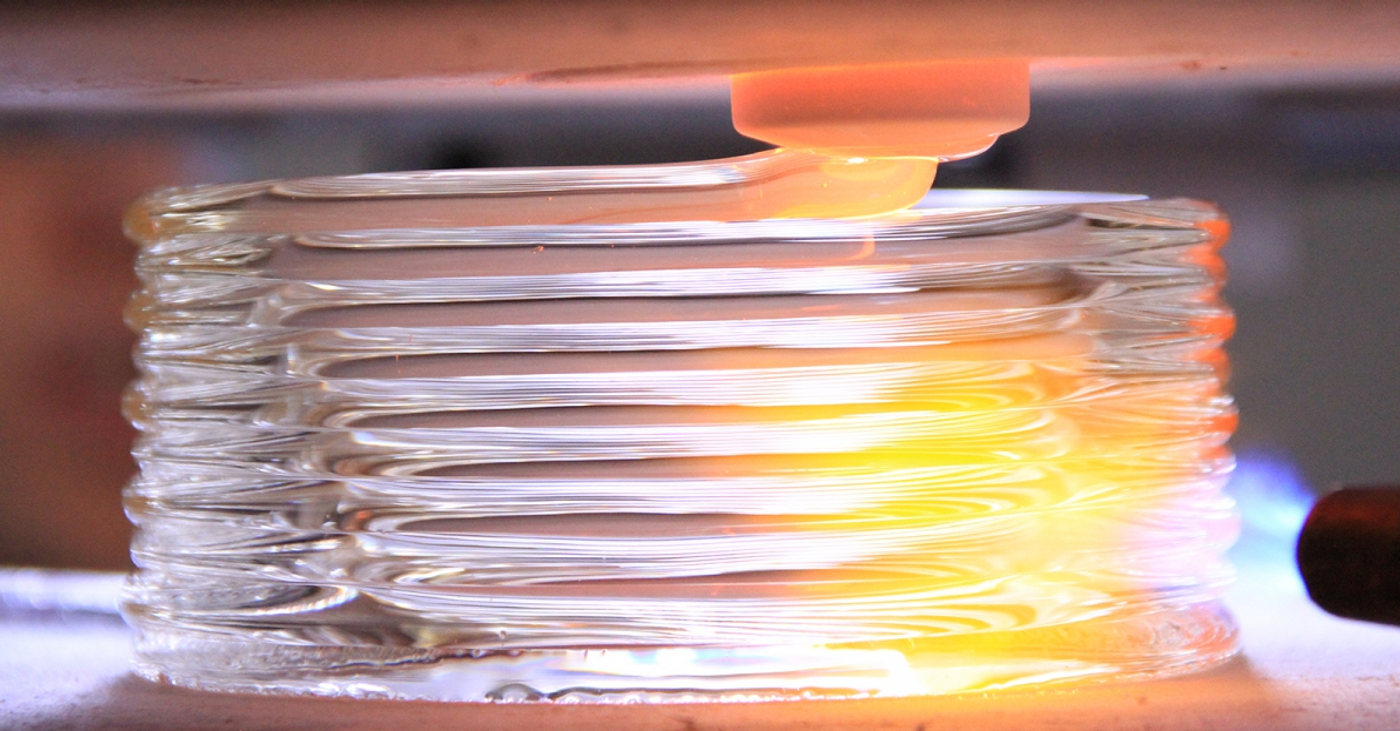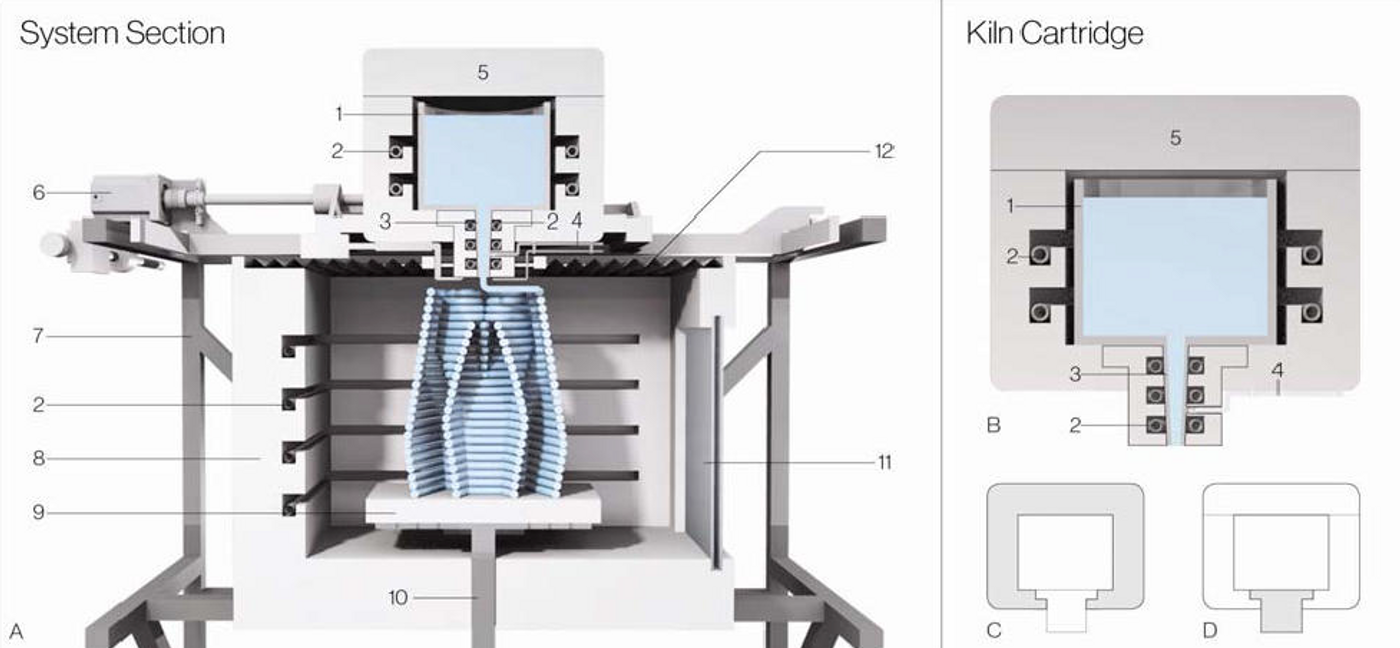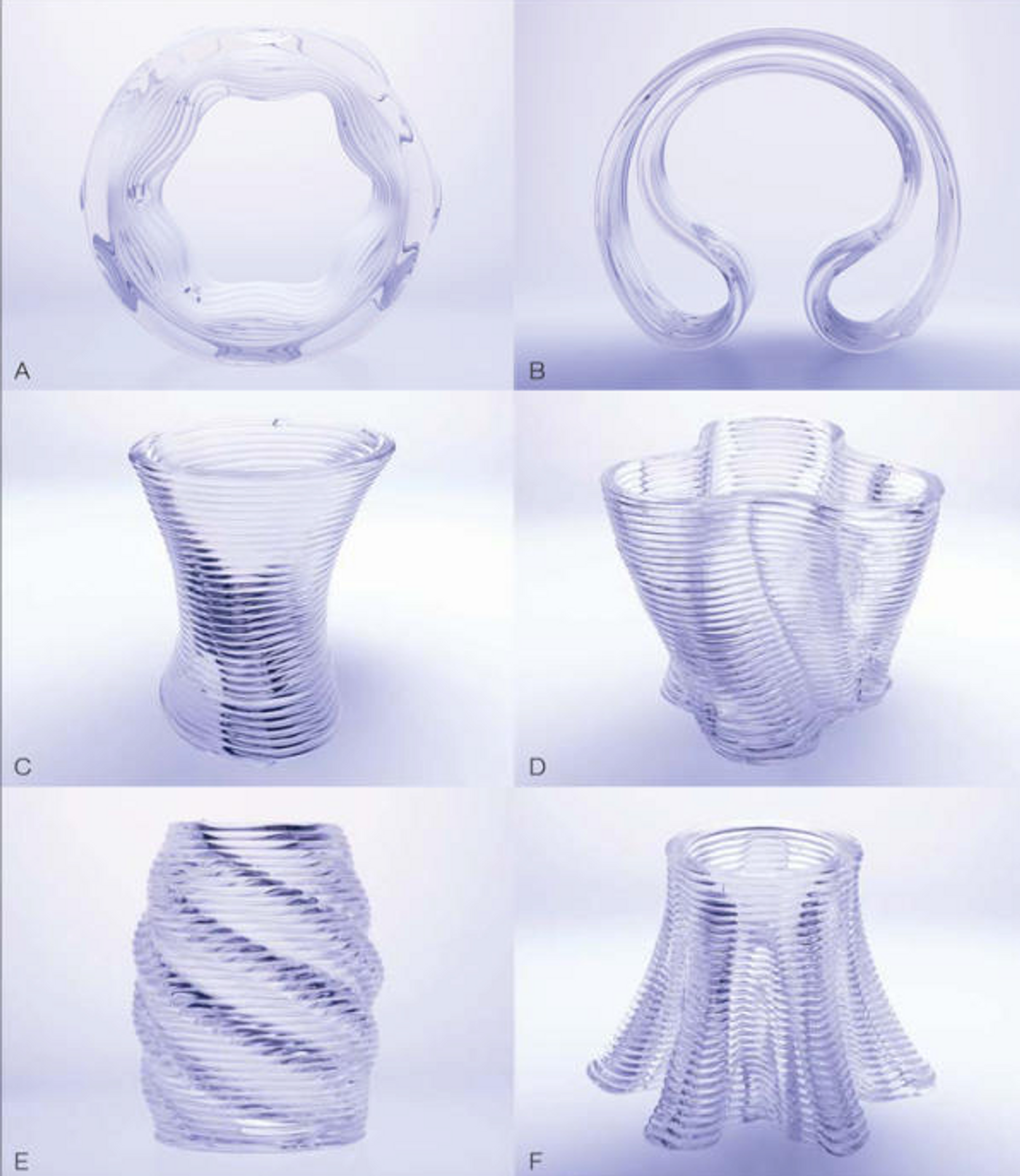Scientists Demonstrate 3D-Printed Glass Sculptures
The 3D printing industry is becoming super versatile. Scientists have 3D-printed various things, ranging from little plastic sculptures, to replacement jaws for sea turtles, to bridges, to pills, and still, more types of matter continue to show that they are ready to succumb to the future of the computerized creation that is 3D printing.
The latest 3D printing project being tackled and perfected by scientists at Massachusetts Institute of Technology (MIT) is that of molten glass, which has been manipulated in such a way that a machine can actually print out 3D sculptures using a high-heat reservoir, a high-heat nozzle, and some robitics.
The group is calling themselves Mediated Matter, and is directed by Neri Oxman. The sculptures that this group has created by way of 3D printing are simply stunning.
Interestingly, the sculptures are able to be flat or wavy – the printing machine is able to create all kinds of designs using clever motions to manipulate the molten glass while gravity takes over from there. Then, the molten glass cools into the shape that the 3D printer creates.
The printer that is used to make these works of art holds the molten glass inside of a crucible kiln, which works as the ‘ink cartridge,’ while a nozzle made to withstand the heat of molten glass squirts it into position where it will need to harden. The molten glass is stored in the kiln at a temperature of about 1040?1165°C, where it sits in ready-mode until the machine is ready to start drawing away.
The printer then takes orders from a computer, which keeps a CAD file open of the item to be printed, and begins the printing process based off of that CAD file. You can see some examples of what this 3D printing process is capable of producing below:
As you can see, there are many different varieties of glass sculptures that this machine is capable of creating from just a pool of molten glass. They range from flat, round vase-like sculptures, to wavy or swirly items that you might see standing up on a table for decoration. One thing that is clear is that there doesn’t appear to be a limit to the type of creation this machine can make; very minimal human intervention is required for this to work.
Not only will this method of glass sculpture-making improve the speed of manufacturing these kinds of sculptures, but it will also reduce the amount of accidents, as these machines are programmed to perform tasks with pinpoint accuracy over and over again.
Below, you can see a video example of the 3D printer making glass sculptures layer-after-layer in an almost perfect fasion:
With 3D printing taking on so many uses in today’s modern world, it won’t be long before 3D printing becomes a typical manufacturing process for even more of our every-day items.
Source: Mediated Matter 1, 2











